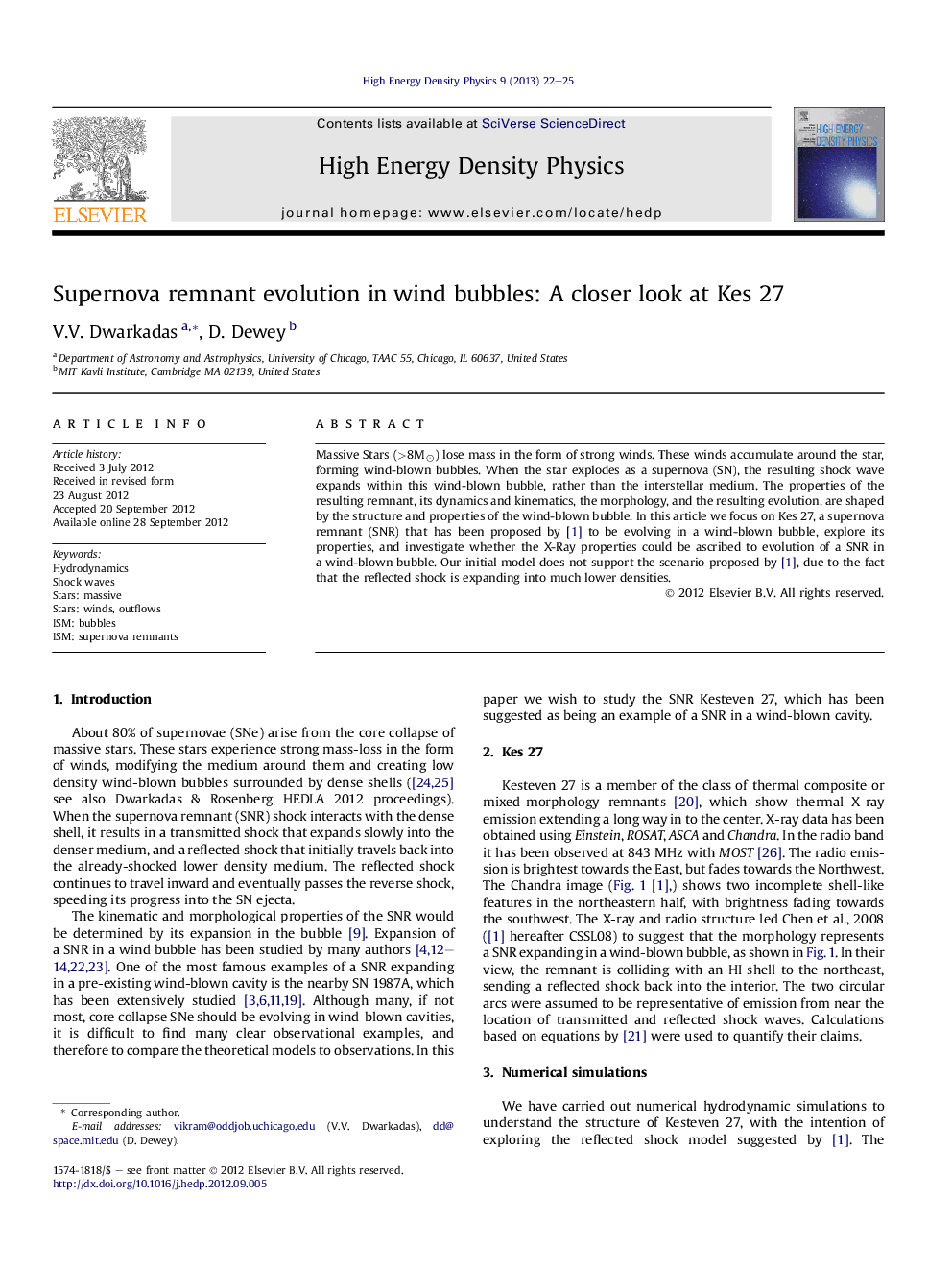| Article ID | Journal | Published Year | Pages | File Type |
|---|---|---|---|---|
| 1772498 | High Energy Density Physics | 2013 | 4 Pages |
Massive Stars (>8M⊙) lose mass in the form of strong winds. These winds accumulate around the star, forming wind-blown bubbles. When the star explodes as a supernova (SN), the resulting shock wave expands within this wind-blown bubble, rather than the interstellar medium. The properties of the resulting remnant, its dynamics and kinematics, the morphology, and the resulting evolution, are shaped by the structure and properties of the wind-blown bubble. In this article we focus on Kes 27, a supernova remnant (SNR) that has been proposed by [1] to be evolving in a wind-blown bubble, explore its properties, and investigate whether the X-Ray properties could be ascribed to evolution of a SNR in a wind-blown bubble. Our initial model does not support the scenario proposed by [1], due to the fact that the reflected shock is expanding into much lower densities.
